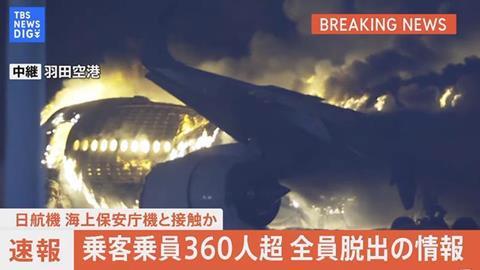While it will take some time to establish the specific factors that led to the collision between a Japan Airlines Airbus A350-900 and a Japan Coast Guard Bombardier Dash 8-300 at Tokyo Haneda airport on 2 January, it is noteworthy that runway incursions had become a topic of interest in the wider airline industry in recent months – particularly in relation to the USA.

Indeed, speaking during IATA’s Global Media Day in December, senior vice-president of operations, safety and security Nick Careen said that runway safety was “on the radar” of the airline association.
Careen noted that incursions – where a safety risk is created by improper positioning of an aircraft, vehicle or person on a runway – had been getting “a lot of airplay and political focus in terms of the FAA and a couple of incidents with air traffic control and some aircraft involved”.
Those incidents in the USA included one in January 2023, where two commercial airliners – a Boeing 737 belonging to Delta Air Lines and a 777 belonging to American Airlines – were on a collision course at New York’s John F Kennedy International airport, and another in Austin, Texas, a few weeks later, where a FedEx freighter was cleared to land on the same runway from which a Southwest Airlines 737 was cleared to depart.
With another couple of incidents in the USA further raising concerns, stakeholders cited contributing factors such as technology breakdowns, the drain of institutional knowledge, a lack of experienced staff, and a delay in funding for critical infrastructure modernisation.
The FAA has since been working to address those issues and there is no suggestion yet that such remedies are relevant to the Haneda incident.
But the latest incident marks an inauspicious start to the year for an industry that expects to release improved safety data for 2023 in the coming weeks.
Speaking in December, Careen said that across the first six months of 2023 – full-year data is expected in March 2024 – there was just one fatal crash recorded from more than 18 million sectors flown, involving a Yeti Airlines turboprop.
“Airlines provide the safest form of mass transportation on the planet and will continue to do so,” Careen said.
Preliminary figures for the rest of 2023 suggest there were no further fatal crashes involving larger commercial airliners – notably meaning the year likely saw no fatal crashes involving jet-powered types.
Whether or not the fatalities in the Haneda incident are counted in the commercial sector’s safety data for 2024 will come down to methodologies, given those who died were in the coast guard aircraft that was not undertaking a commercial operation.
Regardless, the total loss of an A350 from a runway incursion – despite no fatalities among its passengers and crew – is a never-event and marks that first such occurrence in the history of that aircraft programme, which has so far seen around 600 widebodies enter service.
On runway safety, Careen noted in December that “our risk profile on this has not increased, but it is at the point where we need to monitor it in terms of do we believe it could be something that we need to get more involved in”.
The Haneda incident likely means that point has been reached.
















